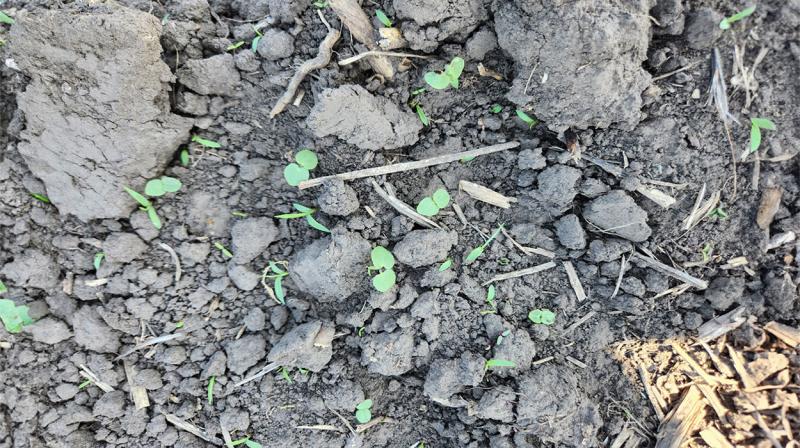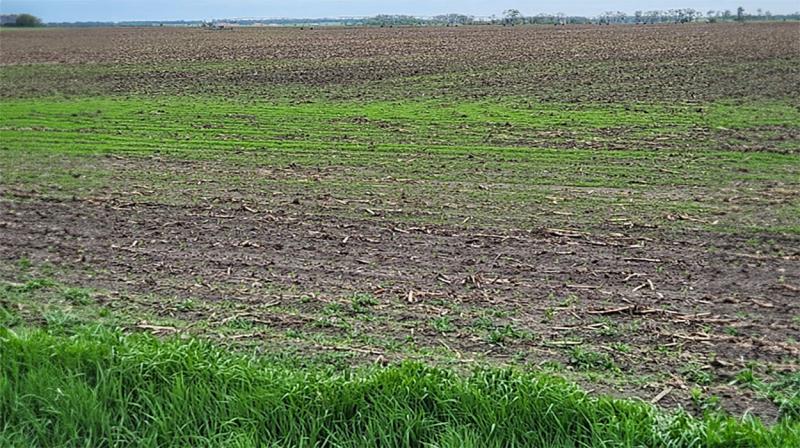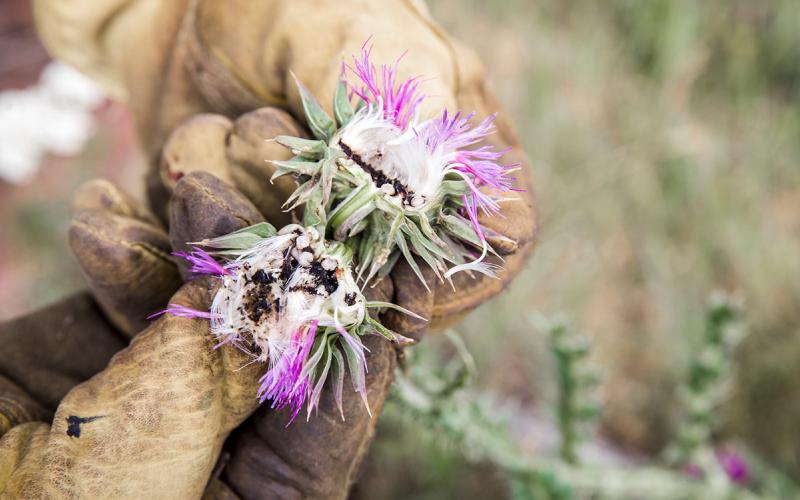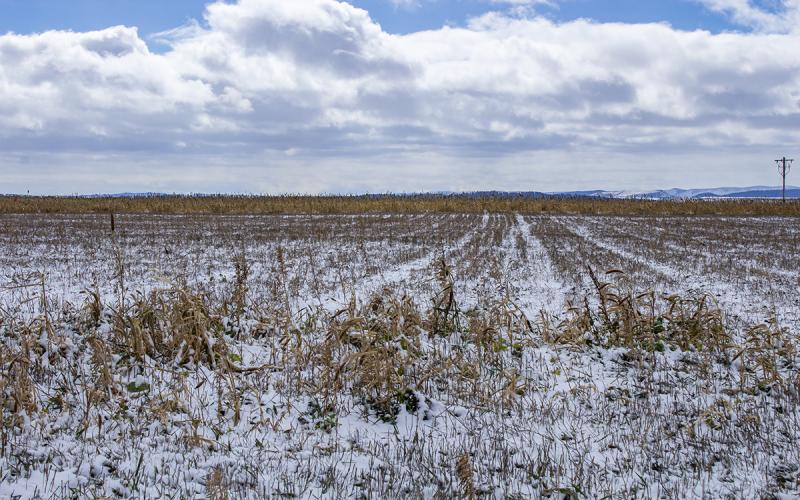Written collaboratively by Eric Jones, Philip Rozeboom, Jill Alms, and David Vos.
Wet conditions have delayed farmers from planting. On top of being kept out of the fields, the inevitable windy days have kept farmers from spraying preemergence herbicides immediately after planting. During some recent field research plot scouting, weeds were emerging in the non-treated plots, as well as the plots treated with a preemergence herbicide. Just because weeds are emerging after treatment does not mean the application was a failure. Below are some troubleshooting considerations to help determine why some weeds emerged.
Troubleshooting Considerations
Species are not controlled by the herbicide applied.
Most preemergence herbicides do not control a broad spectrum of weeds. Atrazine has marginal control of grass weeds, but it controls many broadleaf weeds. S-metolachlor (Dual Magnum, Cinch, others) has variable control of broadleaf weeds, but it controls many grass weeds. This is why many preemergence herbicides are sold as a premix, for example, Bicep ( atrazine + S-metolachlor), or tank mixtures of various herbicides are recommended.
Large-seeded weeds (for example, velvetleaf, sunflower, common/giant ragweed, and woolly cupgrass) are difficult to control with preemergence herbicides. Likely, these will be the only species germinated if a sound preemergence herbicide is applied. While large-seeded weeds are difficult to control with preemergence herbicides, many of the herbicides will still provide suppression.
Lack of activating rainfall.

Activating rainfall refers to the rainfall that moves the preemergence herbicide that is on the soil surface into the soil profile where the germinating weed seeds are located. Adequate activating rainfall is approximately 0.5 to 1 inch of rain within a few days of the herbicide application. While many parts of South Dakota have been getting adequate rainfall, delays of being wet along with high winds can delay herbicide application, and then the weather could be dry for an extended period.
Aside from knowing the exact rainfall for a specific area, if many weed species are germinating, it is likely the herbicide was not activated (Figure 1). While not common, too much rainfall can result in poor control as well. If areas get rainfall of 2 inches or greater, the herbicide can be moved deeper into the soil profile below where the weeds are germinating.
Sprayer skips.

If there are small, isolated areas in the field that are infested with weeds, and the surrounding areas are weed-free, there is a chance that there was a sprayer skip, or the sprayer was not turned on in time (Figure 2). However, some of these areas could have a different soil type or another characteristic (pH or different weed species present based on soil) that appears to be a sprayer skip. Since many sprayers are equipped with GPS, this may not be a common problem.
Other Considerations
Aside from being an eyesore, weeds not controlled with preemergence herbicides due to reasons that may be out of your control this early in the growing season does not correlate to a yield loss. Previous research suggests that the critical period of weed control (the time where weeds need to be controlled before a significant yield loss occurs) does not start until the three-leaf (V3) in corn and two-trifoliate (V2) in soybean (Hall et al. 1992; Van Acker et al. 1993). While a significant yield loss may not have occurred, these studies did not consider the difficulty to control herbicide-resistant weeds, nor the environmental factors (for example, wind and rain) that can delay herbicide applications or other tactics to the point where significant yield loss occurs. On areas where an activating rainfall did not occur, consider making postemergence herbicide applications earlier and adding a residual herbicide to the tank to control later-emerging weeds. The small, isolated areas where weeds germinated can be treated with spot spraying to ensure these weeds are managed before getting too big to be effectively controlled with a normally scheduled postemergence herbicide application.
References
- Hall MR, Swanton CJ, Anderson GW (1992) The critical period of weed control in grain corn. Weed Sci 40:441–447
- Van Acker R, Swanton C, Weise S (1993) The critical period of weed control in soybean [Glycine max (L.) Merr.]. Weed Sci 41:194–200


